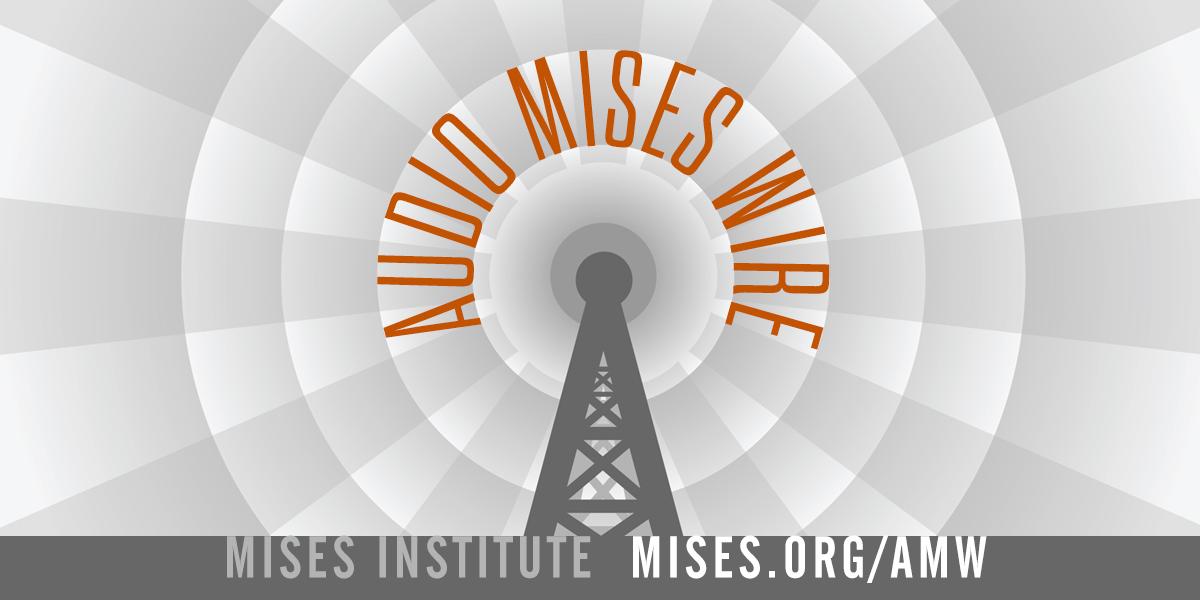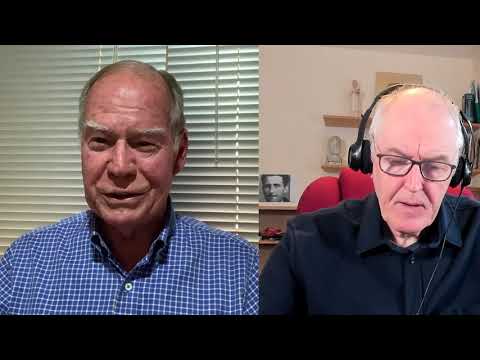JACK POSOBIEC: ‘The lines are 3 to 4 hours long in Levittown’ in Bucks County, PA
“We showed that we can do this. We got the injunction.”
Joe Rogan Says He Gave Harris Campaign “Open Invitation”, Offer Still Stands
Joe Rogan Says He Gave Harris Campaign “Open Invitation”, Offer Still Stands
Podcaster Joe Rogan said in an Oct. 30 episode of his show that he gave Vice President Kamala Harris’s presidential campaign an “open invitation” to sit down for an interview at any time.
“I said anytime. I said if she’s done at 10, we’ll come back here at 10. I’ll do it at 9 in the morning, I’ll do it at 10 p.m. I’ll do it at midnight if she’s up, if she wants to, you know, drink a Red Bull,” he said, recalling what he told the campaign.
Rogan’s show features around 14 million subscribers on Spotify, making it the top show on the platform, but it also generates significant traffic and engagement on YouTube.
His interview with former President Donald Trump, the Republican presidential nominee, released late last week, has garnered more than 41 million views on YouTube so far.
While speaking to comedians Konstantin Kisin and Francis Foster during episode 2220 of The Joe Rogan Experience…
…Rogan said that Harris “actually reached out when she found out that [Trump] was coming on.”
“So their camp reached out to me,” he said.
“So I said, ‘Great, I would love to talk to her.’ But it was very difficult to tie it down. They wanted [me] to travel, and see, the thing is, if I go somewhere, then there’s going to be other people in the room. And they want to control a lot of things, I’m sure.”
As The Epoch Times’ Jack Phillips reported, Harris was in Houston last week and held a rally there featuring an endorsement and speech from pop singer Beyoncé.
In a social media post earlier this week, Rogan said that the Harris campaign had conditions for the Democratic presidential nominee to do the interview.
The Epoch Times previously reached out to the campaign, which has not responded to Rogan’s remarks, for comment.
“For the record, the Harris campaign has not passed on doing the podcast,” Rogan wrote in a social media post on Tuesday.
“They offered a date for Tuesday, but I would have had to travel to her, and they only wanted to do an hour. I strongly feel the best way to do it is in the studio in Austin. My sincere wish is to just have a nice conversation and get to know her as a human being. I really hope we can make it happen.”
During the episode with Kisin and Foster, Rogan also addressed speculation that he might be a covert Trump supporter.
“Just because of my appearance, there’s always been this assumption that I’m some right-wing MAGA guy,” he said, referring to Trump’s “Make America Great Again” slogan.
“I’m a politically homeless person for sure. You know, I always considered myself a left-wing person. I never thought I would ever vote right-wing, but then the tides of culture shifted in a very bizarre way. And it just made me, over time, much more aware of what this stuff is really all about.”
Trump’s running mate, Sen. JD Vance (R-Ohio), will also air on Rogan’s show after being interviewed at Rogan’s Austin studio on Wednesday.
Both Trump and Harris have engaged in a flurry of campaigning as the race draws to a close. Both candidates have taken part in several podcasts ahead of the 2024 General Election as they attempt to reach new audiences.
More than 60 million people have cast early ballots so far ahead of the Nov. 5 contest, according to data released by the University of Florida’s Election Lab.
The Epoch Times contacted the Harris campaign for comment about Rogan’s claims but didn’t receive a reply by publication time.
Tyler Durden
Fri, 11/01/2024 – 18:00
Morrissey gives £50,000 to save Salford Lads Club
“His support is more than a financial contribution; it’s a powerful endorsement of our mission and a tribute to the club’s enduring role in the lives of young people and the cultural heart of Salford.”
EU Green Party calls on Jill Stein to drop out of US presidential race and back Kamala
“The stakes of these elections could not be higher,” the statement read.
Shanghai clamps down on Halloween celebrations, tightens security
“The government doesn’t want any counternarratives or disguised social commentaries that poke fun at or may be seen as protesting against the regime.”
Radiohead’s Thom Yorke walks off stage after being heckled by pro-Palestinian protester
“Come on. You want to p*ss on everybody’s night? OK, you do, see you later then.”
The Reality of Red-State Fascism
The sweep of history shows that there are two main dangers to liberty, one that comes from the left and the other that comes from the right.
National Climate, Polling Points To A Trump Victory
National Climate, Polling Points To A Trump Victory
Authored by Jim Lee via RealClearPennsylvania,
Currently, both the national climate and the polling seems to point to a Trump victory in November. For instance, according to polling averages , only 28% of Americans say the country is going in the right direction, compared to 61% who say it’s on the wrong track. Why is this important? Because wrong track voters are more apt to vote for the party out of power – i.e., the Trump campaign – than the party “in power.”
Second, President Joe Biden’s average approval rating is still at a dismal 41% nationally, with a higher 56% of Americans saying they disapprove of his job performance. Why is this important? Because if Americans are unhappy with the president’s job performance, they theoretically should be less likely to vote for another four years of his administration with a vote for the Harris campaign. And remember, when Kamala Harris was asked on a national network television program just recently if she would have done anything different than Biden, she couldn’t answer. In other words, she seems to have unwittingly conceded that she represents another four years of a Biden presidency.
Another reason the political climate seems to favor Republicans at the current time has to do with how Americans are self-identifying in polls. According to national polling, in October 2016, the country self-identified as Democrat by a 3-point margin over Republicans. In October 2020, the country self-identified as Democrat by a higher 6-point margin. But in September of this year, just last month, new polling showed Republicans with a 1-point lead over Democrats on party self-identification. This could prove important because it seems to suggest that more Americans are aligned with the GOP brand than the Democrats – another good sign for the Trump campaign.
Moreover, the current polling has shifted in Trump’s favor both nationally and in critical battleground states. For instance, the RCP average of national polls now shows Trump with a 48.4 to 48.3% lead – just one tenth of a percent difference, but still leaning Trump. This is a big deal because the national popular vote has favored Harris for months, but now has shifted in Trump’s favor. This could be a sign of which way the political winds are blowing. Plus, polling averages currently show that Trump leads in all seven battleground states, including Pennsylvania (.6 percent lead), Michigan (.2 points), Wisconsin (.2 points), Arizona (1.5 points), North Carolina (.8 points), Georgia (2.2 points) and Nevada (.7 points). These are RCP averages as of October 26.
In Pennsylvania, Trump’s lead is significant when you consider that on that day in 2020, Biden led in the RCP averages in Pennsylvania by 4.8%; Biden of course went on to eek out a narrow margin over Trump by only 1.2%. Back in 2016 at this time, Hillary Clinton led in the RCP averages by 4.3 points, only to lose to Trump by a razor-thin, 48.58 to 47.85 margin on Election Day (or 44,292 votes).
So, are we on the cusp of a landslide (Electoral College) victory for Trump? No one knows for sure, but it could happen. In Pennsylvania, our latest poll shows a 46% to 45.8% statistical tie between Trump and Harris (Harris leading by .2 percentage points). This poll was conducted October 18-22 with a sample size of 500 likely voters. But there is plenty of good news for Trump in this poll.
For instance, Trump looks poised to overperform his 2020 numbers with Republicans. In the current survey, Trump is winning Republicans by an 89.4% to 3.7% margin over Harris. Why is this important? In 2020, Trump lost 8% of the GOP vote to Biden – a huge setback in a state where Democrats outnumber Republicans. More importantly, Trump is doing better with Independents in the current survey, currently leading them 43.9% to 36.4%. In 2020, Biden carried Independents by a 52:44 margin according to CNN exit polls. If Trump wins Independents in Pennsylvania, which constitute about 16% of the electorate and are technically the fastest growing cohort of the voter registration rolls, he will likely win the Keystone State.
And the political issues currently favor a Trump victory in terms of what is influencing people’s vote choices. For instance, in our Pennsylvania survey, 45% say inflation and the economy is the top issue that will influence peoples’ votes for a candidate, while immigration is second (at 32%). No other issue polls higher. Inflation/economy voters are breaking for Trump by a 57.4% to 35.4% margin. Immigration voters favor Trump by a whopping 72.7% to 17.4% margin. So, if voters go to the polls thinking about inflation, the economy and illegal immigration, Trump is likely to win. Lower ranking issues like protecting democracy, reproductive rights, and healthcare access all favor the Harris narrative.
Yet despite all these factors pointing in Trump’s direction, our polling still shows a statistical tie, so Harris can’t be counted out. In the poll, there are some red flags for Trump. For instance, voters who say they already cast early ballots favor Harris by a 53.9% to 37.1% margin. This means Harris has the edge in early returns with absentee and mail in ballots. Plus, Trump doesn’t seem to be getting much traction with Hispanic/Latino voters, which make up about 8% of the state’s electorate and are a fast-growing cohort in suburban areas like Lancaster, Reading, Allentown and Wilkes-Barre/Scranton media markets. In the current survey, Harris leads Trump with Latino voters 76.7% to 20.0%. This suggests an underperformance for Trump when you consider that Trump got 27% of the Latino vote in 2020 according to exit polls. In addition, in a separate poll we recently conducted in the hotly contested 10th congressional district election (between GOP incumbent U.S. Rep. Scott Perry and Democratic challenger Janelle Stelson), Harris actually leads Trump by a 46:41 margin – a reversal from a 4-point Trump victory in this same district in 2020. So, Trump seems be underperforming in some Mid-state counties, which are a must win area for him when you consider that our polling shows Trump will lose the vote-rich Philadelphia suburban collar counties, plus the state’s two major urban centers of Allegheny and Philadelphia counties. Let’s not forget that in 2020, Biden carried the Keystone State but only by winning 13 of Pennsylvania’s 67 counties – a highly surgical approach to victory.
So, the current survey seems to suggest a very close race on Election Day in a very pivotal battleground state. Turnout could be the deciding factor in determining the outcome. This is because Pennsylvania is almost a 50:50 state in voter registration since the GOP has narrowed the voter registration edge to fewer than a 300,000 vote-difference, or a current 44% Democrat to 40% GOP margin; independents and other third-party voters make up the remaining 16%. Exit polls in 2020 showed a +1 percent margin for GOP versus Democrats in party self-Identification. In the current poll, Trump is winning Republicans 89.4% to 3.7% over Harris, while Harris is winning Democrats 90.8% to 3.2% over Trump. So, both candidates seem to be doing equally well in their respective bases of support. This means it’s hard to tell if the “never Trump” campaign narrative is getting real traction or is simply a red herring. This means whichever candidate gets more of their voters to the polls will likely be the victor. Other states will see similar trend lines since states like Arizona, Nevada, and Wisconsin are also states where Republicans and Democrats are relatively equal in voter registration. Turnout will play a critical role in this election, and the party that gets their vote out could have the edge on Election Day.
Tyler Durden
Fri, 11/01/2024 – 07:20
Chinese Hackers Compromised Multiple Canadian Government Networks For Years, Stole Info: Security Agency
Chinese Hackers Compromised Multiple Canadian Government Networks For Years, Stole Info: Security Agency
Authored by Andrew Chen via The Epoch Times (emphasis ours),
Cyber threat actors from the People’s Republic of China (PRC) have been implicated in multiple breaches of networks associated with federal government agencies and departments, according to a report from the national cybersecurity agency.
“Over the past four years, at least 20 networks associated with Government of Canada agencies and departments have been compromised by PRC cyber threat actors,” said the National Cyber Threat Assessment 2025-2026, released Oct. 30 by the Canadian Centre for Cyber Security.
The centre identifies China as the top threat actor targeting Canada, noting that its cyber operations are “second to none” in scale, technique, and ambition. Beijing’s objectives include espionage, intellectual property theft, malign influence, and transnational repression, the centre says.
While the report highlights China’s hacking of 20 federal government networks in the past four years, information elsewhere in the report shows that Chinese hackers have had access to multiple government networks longer than that. The report says that Chinese agents have compromised Canadian government networks over the past five years, collecting communications and other valuable information.
“While all known federal government compromises have been resolved, it is very likely that the actors responsible for these intrusions dedicated significant time and resources to learn about the target networks,” the report reads.
At a press conference on Oct. 30, Caroline Xavier, chief of the Canadian Communications Security Establishment (CSE), would not comment on the details of the breaches, but said mitigation measures had been “effective.”
“The key message for us—when there are incidents that occur—is really being focused on ensuring [we] minimize the impact to the government department that may have been compromised. And that is exactly where our focus has been,” she told reporters. “We do feel that the measures were taken to be able to mitigate any of the risks, and to address the incidents in an effective manner.”
The cyber centre is hosted within CSE, Canada’s electronic spy agency, which is responsible for collecting signals intelligence and defending against cyberattacks.
China Targets
In addition to federal agencies, provincial and territorial governments are also seen as valuable targets for Beijing, the report said, noting that these governments hold decision-making power over regional trade and commerce, including the extraction of critical minerals and other natural resources.
Xavier said this targeting indicates Beijing is a “sophisticated, consistent, and persistent actor,” and that Canada needs to address the threat with a more comprehensive approach.
“We have work to do as a nation, to continue to work, in particular with the provinces, territories, indigenous communities, because we recognize that we’re all vulnerable, or we all could be vulnerable, and we really want to continue to raise Canada’s cyber resilience,” she said.
The cyber centre also echoed previous reports from various human rights groups, warning that Beijing’s transnational repression has primarily targeted five specific communities, referred to by the regime as the “five poisons.” These include Falun Gong practitioners, Uyghurs, Tibetans, supporters of Taiwanese independence, and pro-democracy activists.
“PRC actors very likely facilitate transnational repression by monitoring and harassing these groups online and tracking them using cyber surveillance,” the report said. “For example, the PRC has been publicly linked to cyber espionage operations against the Uyghur minority group, including members living in Canada, using spear phishing emails and spyware.”
Other Countries Named
Other state-backed threat actors highlighted in the cyber centre report include Russia, Iran, and India.
Russia’s cyber operations are characterized as “a multi-layered strategy” that combines conventional cyber espionage and computer network attacks with disinformation. Its primary goal is to enhance Russia’s global status while undermining democratic institutions in Canada and among its allies.
A specific case cited in the report involves a breach detected by Microsoft in January, where a Russian state-sponsored cyber threat actor known as Midnight Blizzard accessed the company’s cloud-based enterprise email service.
The group infiltrated correspondence between Microsoft and government officials in Canada, the United States, and the United Kingdom. Initially, the actors sought information about Russia itself, but later used personal data and credentials from the emails to gain access to Microsoft customer systems.
Meanwhile, the report said Iran has been expanding its cyberattacks to western countries amid its ongoing military conflict with Israel.
“Iran has taken advantage of its back-and-forth cyber confrontation with Israel to improve its cyber espionage and offensive cyber capabilities and hone its information campaigns, which it is now almost certainly deploying against targets in the West,” the report said.
During the press conference, Xavier also identified India as an “emerging threat” to Canada.
“India very likely uses its cyber program to advance its national security imperatives, including espionage, counterterrorism, and the country’s efforts to promote its global status and counter narratives against India and the Indian government,” the report said.
Citing her recent testimony before the foreign interference inquiry, Xavier noted India could potentially “flex those cyber threat actions against Canadians” amid ongoing diplomatic tensions.
Earlier this month, Canada expelled six Indian diplomats, prompting a reciprocal move by India, which also expelled six Canadian diplomats. This dispute arose after the RCMP announced its investigation into criminal activities allegedly involving “agents of the Government of India.”
‘Ever-Present’ Threat
The Centre for Cyber Security says Canada has entered a new era in which cyber threats are “ever present.”
“Canadians will increasingly feel the impact of cyber incidents that have cascading and disruptive effects on their daily lives,” the report said.
The centre says the threat has expanded as Canadians increasingly rely on online platforms and digital technologies to go about their lives.
“These systems record and process vast amounts of data about us, often over poorly secured or untrustworthy digital networks,” it said.
Aside from the threats from hostile state actors, the centre notes that the cybercrime business model is “underpinned by flourishing online marketplaces” where leaked data is sold along with cyber tools for criminals.
Tyler Durden
Thu, 10/31/2024 – 23:55
Germany closes all Iranian Consulates in country after Tehran executes American man of German-Iranian descent
69-year-old Jamshid Sharmahd was a journalist and outspoken critic of the Tehran government who had been living in California since 2003 before he was kidnapped by Iranian security forces in Dubai in 2020.
















